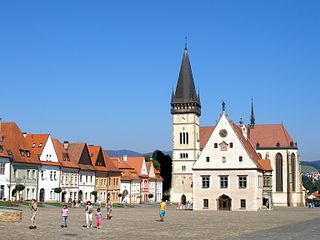Cleantech in Slovakia
Native Slovakian Robin Babicek writes on the 2GreenEnergy Facebook page on my post concerning the geothermal breakthrough coming out of homeland:
As long as we’re on the subject of Slovakia, have you heard about project GreenWay? I go away for 6 months and my little country turns into a cleantech leader. Ain’t that some (^*@$).
The Greenway site is in Slovakian, but if the Google Chrome translator is to be trusted, the project is essentially the same as Better Place, i.e., battery-swapping for electric vehicles. As far as I can tell, this concept isn’t catching on well, even in Israel, arguably the region of the globe whose physical, economic, and political conditions militate most forcefully in its favor.
In any case, I’m delighted to see Slovakia running in the direction of cleantech.


“Slovakia has four nuclear reactors generating half of its electricity and two more under construction.
Slovakia’s first commercial nuclear power reactor began operating in 1972.
Government commitment to the future of nuclear energy is strong.”
http://www.world-nuclear.org/info/inf91.html
GreenWay’s site is in English as well, http://www.greenway.sk/en/ (all it takes is to click the British flag on the top right)
Some key differences between Better Place and GreenWay:
1. Better Place sells the cars, GreenWay doesn’t sell thier vehicles. They rent the vehicles along with unlimited battery swaps as part of the service. So there shouldn’t be any trepidation, such as “What if I buy a swappable battery car, and the network provider goes bankrupt?” (a valid concern, considering the provider is a start-up)
2. Better Place deals with sedans, GreenWay deals with light duty cargo vans (up to 3.5 tonnes). So they cater exclusively to fleets, who are rather dispassionate about their decisions. They look for potential savings as opposed to personal beliefs, social status, distrust for new technologies or whatever else comes to play when we buy a car.
3. Better Place swap stations are fully automated. While this is very convenient, it also means they have to dig a deep hole and fill it with expensive robots every time they build a new station. GreenWay’s stations rely on the driver (a trained professional) to manually swap the batteries using a forklift (this can still be done in under 7 minutes). There is no need to dig in the ground, the stations are very modular and designed to be deployed, or packed up and moved to another location very quickly. I’d imagine this also makes them quite a bit cheaper.